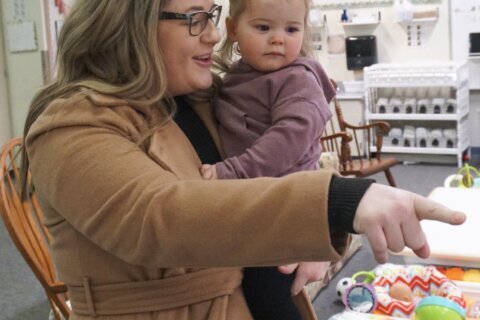Home design trends come and go. Give them some time, and they’ll often come back, as the vintage home trend has shown.
While all-white kitchens and open-concept floor plans still reign supreme on the wish lists of many homeowners and house hunters, furniture and decor of yesteryear are popping up as interesting and often colorful accents.
Everything Old Is New Again
According to Mary Patton, owner and designer at Mary Patton Design in Houston, the term “antique” is used to describe anything over 100 years old. Vintage, on the other hand, has a looser definition as it relates to shorter trend cycles; Patton says it typically applies to elements that are at least 40 years old.
“With supply chain issues affecting the home industry, we’ve been turning to sourcing vintage furnishings and decor as there’s no lengthy lead time,” Patton says. “It’s a trend we love as it’s very good for the environment — you’re reusing something in a unique way. Plus, it’s adding an interesting, casual vibe to the home.”
Lance Thomas, principal designer at Thomas Guy Interiors in Lake Charles, Louisiana, agrees. “Supply chain issues, furniture price increases and 40-week production times for new pieces have been major catalysts for the uptick in vintage and antique markets,” he says.
“The items already exist, so they have a zero carbon footprint,” Patton says. “Plus, the history and uniqueness of vintage items is unlike anything else.”
[READ: Why You Should (and Shouldn’t) Sell Your Home in 2022.]
How to Add Vintage Elements to Your Home
The vintage trend, like many home decor trends, is as much about practicality as it is aesthetics. “People are able to incorporate already existing furniture into their decor without the headaches involved with buying new,” says Thomas.
If you haven’t latched on to the vintage trend, here’s something to consider: According to HomeAdvisor, a homeowner will spend an average of $47,923 for a home renovation or remodeling project. Of course, a more exact figure depends on what it is you’re redoing and the level of finishes you’ve chosen. If all you’re looking to do right now is give your home a fresh look, spending some money on throw pillows and a new area rug is much more palatable than diving into a bathroom or kitchen remodel.
Here are some ways to add vintage elements to a home on a budget:
— Swap out picture frames. “Look for vintage frames which can be repurposed with some cool modern art that has a nice contrast,” Patton says.
— Hang a vintage mirror. Mirrors are a time-honored trick for reflecting light and making a room look larger. Choose one that evokes an earlier era for your wall.
— Replace doorknobs and kitchen cabinet hardware. Even DIY beginners can swap out cabinet and door hardware easily in an afternoon.
— Add a piece of vintage furniture. Thomas says he likes to incorporate Belgian-inspired case goods in his designs, though you could easily take down Grandma’s china cabinet from the attic, too.
Notice that none of these suggestions involve hiring a contractor and spending a ton of money on an extensive renovation project that you won’t even be able to enjoy if you sell your home. The real beauty of the vintage trend is that you can add and subtract easily. Best of all, you can take most of it with you to the next place, if you choose.
[READ:10 Fall Home Decor Ideas From the Pros]
Maintain Your Home’s Vintage Architectural Elements
It’s one thing to pull up wall-to-wall shag carpeting that’s been there since the 1970s. But if you’ve got features like casement windows and herringbone floors, keep them, says Vickey Barron, a licensed associate real estate broker at Compass in New York City. She says that if your home has “good bones” like these, chances are they match the vintage vibe and architectural style of both the home and neighborhood — which is what will attract buyers at resale.
The same goes for vintage kitchens that haven’t been renovated in decades, Barron says. It’s true that buyers covet updated kitchens, but Barron explains that even homes with original metal cabinetry might find a buyer who likes that sort of thing.
This sentiment even goes for the post-war pink kitchens. The recent Barbie-core trend celebrates all things pink in fashion, and it’s also been making waves in home decor.
And if they don’t, they’ll likely prefer the chance to rip it all out and redo it just the way they like it, Barron says.
Telling the Story of a Home
“Residential real estate is an emotional process,” Barron says. She explains that when buyers first walk into a space, they might gravitate toward one feature or another without really understanding why — they just feel drawn to it.
Real estate agents might be in the business of sales, but they’re also in the business of storytelling.
“You have to understand what’s on the outside to complement and respect what you do on the inside,” Barron says, when it comes to decorating a home or, more importantly, staging it for the best resale value. She mentions working with the sellers whose home was renovated and had beautiful furnishings, but they just didn’t mesh with the overall aesthetic of the home.
“No one was responding to it, because it didn’t tell the right story,” she says.
Barron enjoys vintage and antique decor and is known for helping clients stage their homes using key pieces of decor that catch buyers’ eyes. She says that while many of the objects are there for staging purposes only, the look still “speaks” to buyers.
“(Sellers) end up getting a higher price for the properties when it’s done appropriately,” Barron says.
[Read: How to Stage Your Home to Sell.]
Vintage Trends and Home Resale Value
If you are gearing up to sell your home, you might have heard less is more when it comes to staging. While the trend has been more toward neutral colors and decor so that buyers can envision themselves in the space, Patton says that including vintage elements will “absolutely help” a seller attract buyers, especially “if done sparingly and in a cool way that stands out from the sea of all-white houses.”
“You don’t want your house to look like a garage sale,” Patton says.
Barron stresses it’s about curating a look, not buying up a catalog’s worth of vintage furnishings and accents.
If you do decide to go bold with color or wallpaper — another trend that has resurfaced — Barron recommends not taking that theme throughout the entire home. It’s one thing if you enjoy it and intend to be in your home for years to come. But if resale is on the horizon, the trend or fad may change, she explains.
It’s a good reminder for homeowners: You are allowed to enjoy your home just the way you like it while you live in it.
More from U.S. News
8 Countertop Trends for 2022-2023
What The Agency’s Executives Tell Real Estate Agents to Get Through a Tough Housing Market
How to Incorporate Vintage Elements In Your Home originally appeared on usnews.com







